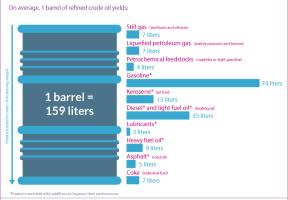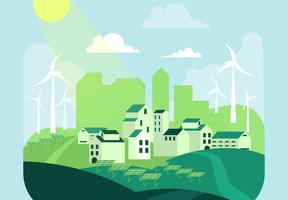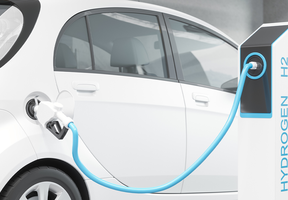The Global Transportation Sector: CO2 Emissions on the Rise
10 min read
Economic globalization, higher living standards and the boom in tourism have spurred an increase in passenger and freight volumes since the end of the 20th century, a trend that is expected to continue through to 2050. The transportation sector is currently responsible for the fastest growth in CO2 emissions.

© SHUTTERSTOCK - Container ships are one illustration of the expansion of intercontinental trade.
Volumes to Triple by 2050
Transportation across the world can be broken down into different modes (road, railway, aviation and shipping) and two main segments:
- Commercial freight: This segment is expanding rapidly as a result of the rise in trade and the diversification of product value chains. Products are no longer manufactured at a single location but are usually made from components produced at different factories around the world. Around 70% of freight is transported by sea, 18% by road, 9% by rail, 2% by canals and under 0.25% by air.
- Passengers: With the development of urban hubs, short trips within cities are becoming the most common form of transportation for individuals. Other travel includes longer overland journeys by road or rail, and flights, which have been rising steadily in number for several years now.
According to the International Transport Forum (ITF)1, both freight and passenger transportation volumes will triple between 2015 and 2050 if current trends in demand continue.
CO2 Emissions
Nearly all forms of transportation, excluding trains, rely on petroleum products. Passenger travel is responsible for 60% of CO2 emissions from transportation, with freight accounting for the other 40%.
In 2018, a total of 24% of global CO2 emissions from combustion came from transportation2. Road transportation of passengers and goods (by car, truck, bus or two-wheeler) was by far the main culprit, accounting for nearly three-quarters of emissions. Aviation and shipping were more or less tied, at just over 11% each. Trains emit very little CO2, representing 1.2%.
Based on current policies, it is estimated that global emissions from transportation will rise by 60% between 2015 and 2050. However, emissions from freight would need to decrease by 45% and emissions from passenger travel by 70% if the Paris Agreement objectives are to be met.
Disruptions on the Horizon
It is difficult to make accurate forecasts since disruptions in the industry may emerge.
- Electric mobility. Although electric vehicles are rapidly gaining in popularity, thanks in particular to strategic decisions in China, they still only accounted for less than 1% of all vehicles worldwide as of 2018. In line with the Paris Agreement climate scenario, this figure would need to rise to 15% by 2030. In addition, consumers in the United States, and increasingly so in Europe and Asia, are particularly attracted to large cars and SUVs. This trend, along with the dwindling popularity of in Europe, meant that CO2 emissions from new cars increased between 2017 and 2018.
- New urban mobility trends. Thanks to car-sharing and greater reliance on public transportation – which is already being promoted in many cities – emissions from this sector could fall by 30% by 2050. E-commerce has a tendency to drive emissions up, but self-driving cars and an increase in working from home could help push them back down.
- Air transportation. There are around 28,000 commercial planes worldwide, which account for 2.5% of total CO2 emissions and 11% of CO2 emissions from transportation. The proliferation of low-cost airlines has led to a huge boom in air travel, up 140% since 2000. Even though innovative technology means that a given flight now emits half the
than it would have in 1990, CO2 emissions from aircraft nevertheless rose 32% between 2013 and 2018, leading to calls in Europe, particularly in Sweden, to boycott flying. Globally, however, air travel is expected to continue to grow. The number of Chinese and Indian air passengers is set to increase four-fold by 2050.
Airlines and manufacturers have set themselves the target of halving their emissions between 2005 and 2050. Taxes on fuel or the widespread rollout of a carbon tax should limit the rise in passenger numbers. Further improvements to are also possible, including making aircraft lighter, enhancing aerodynamics and, most of all, developing new propulsion systems. But none of the proposed solutions are ideal: kerosene emits a significant amount of CO2, requires huge tanks, batteries for electric propulsion are very heavy, and biofuels are difficult to produce on an industrial scale. - Maritime shipping. Today, nearly 100,000 commercial ships travel the seven seas. The vessels are increasingly large, and are mostly container ships, tankers and bulk carriers. As in aviation, the International Maritime Organization has called on sea carriers to halve their emission levels as of 2008 by 2050. One solution is to reduce the ships’ speed, but this would then bring down operating efficiency. Another idea is to replace highly polluting fuel oil with something else, such as , already used to some ships. Switching to LNG not only reduces CO2 emissions by 20%, but also almost completely eliminates emissions of sulfur oxides and ultra-fine particles. Other propulsion solutions, such as , hydrogen and , are not yet as mature. Some companies are testing the use of sails.
References :
1 Specialized body within the Organisation for Economic Co-operation and Development (OECD) bringing together developed countries. Read the 2019 study
2 Excluding emissions from agriculture and land use.
Sources :
- ITF's annual report
- Transportation statistics in France (in French only
- Les Echos (in French only)



















